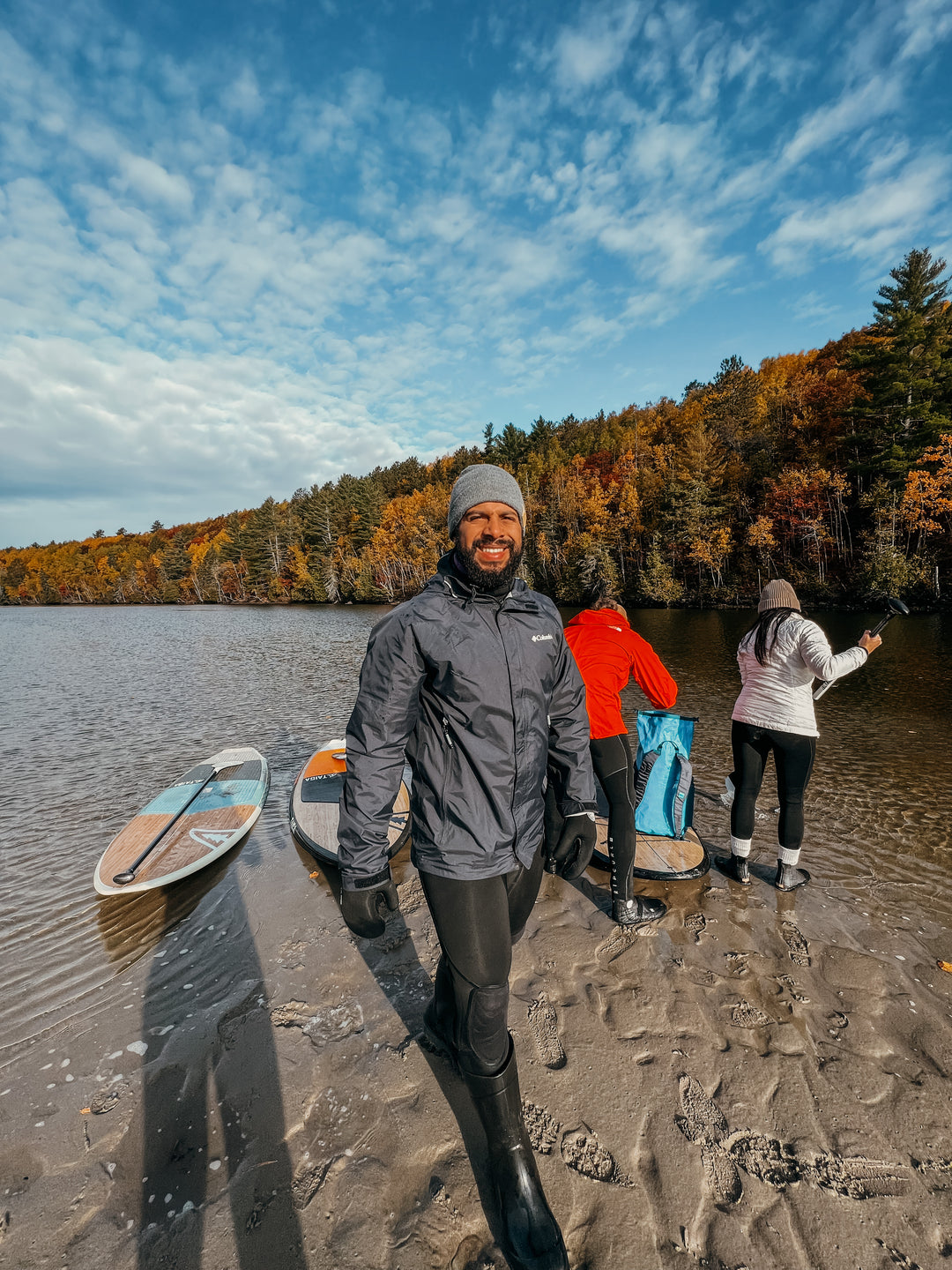SUP in the Fall:
How to Extend Your Season
How to Extend Your Season
Fall has officially begun in Quebec and we’re definitely starting to feel it! Good news for those who are SUP amateurs: it’s still possible to spend time in the water and take in those beautiful fall colors. Here are a few tips to help you safely practice SUP during this season.
Wetsuit or no wetsuit? It’s the most commonly asked question and we have yet to find a definite answer:
Our answer: You should choose whatever is most convenient for your trip on the water, as well as your skill and level of stability on the board.
As a safety precaution, be sure to check the weather for risks of wind/rain and decide on a path that will keep you close to the shore if need be. This way, if you fall in the water and get cold, it will be much easier for you to get back to shore and warm yourself up.
Of course, the leash and the life jacket are a MUST, no matter what the season may be.
Photo : Dominic Courchesne
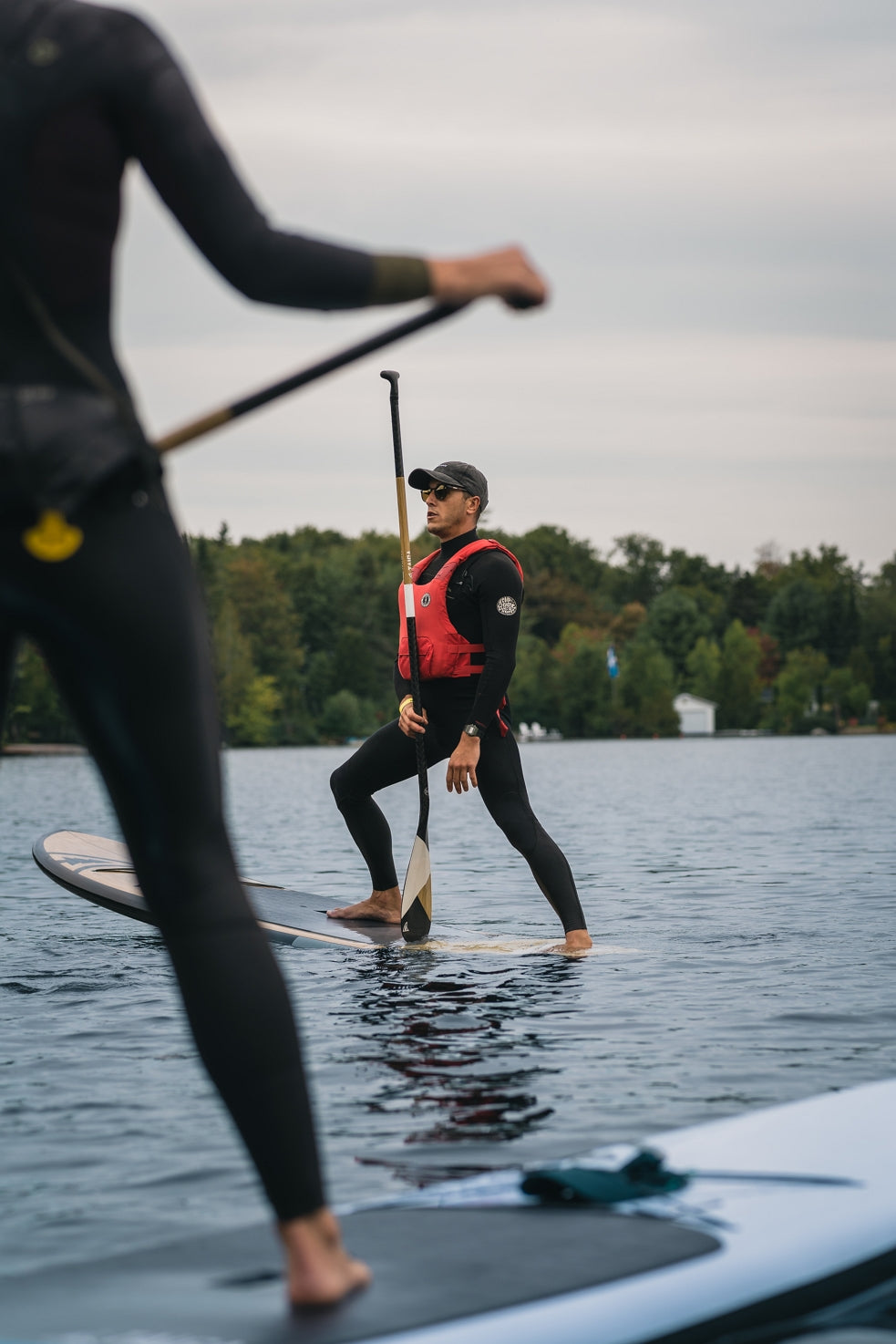
No, it is not always easy to select the right isothermal apparel. With many different models and thicknesses, it’s important to keep in mind certain key elements:
During autumn, the greatest danger is thermal shock. Winter is simple: it is freezing, we therefore don’t ask ourselves any further questions and we slip on a thick wetsuit. Fall however is more complicated. We can paddle during beautiful 20°C days or windy 10°C days. One thing is for sure, when it’s 20°C and we have to paddle hard, it gets real hot in a wetsuit, but we are happy when we fall in the water.
Photo: Geneviève Diotte
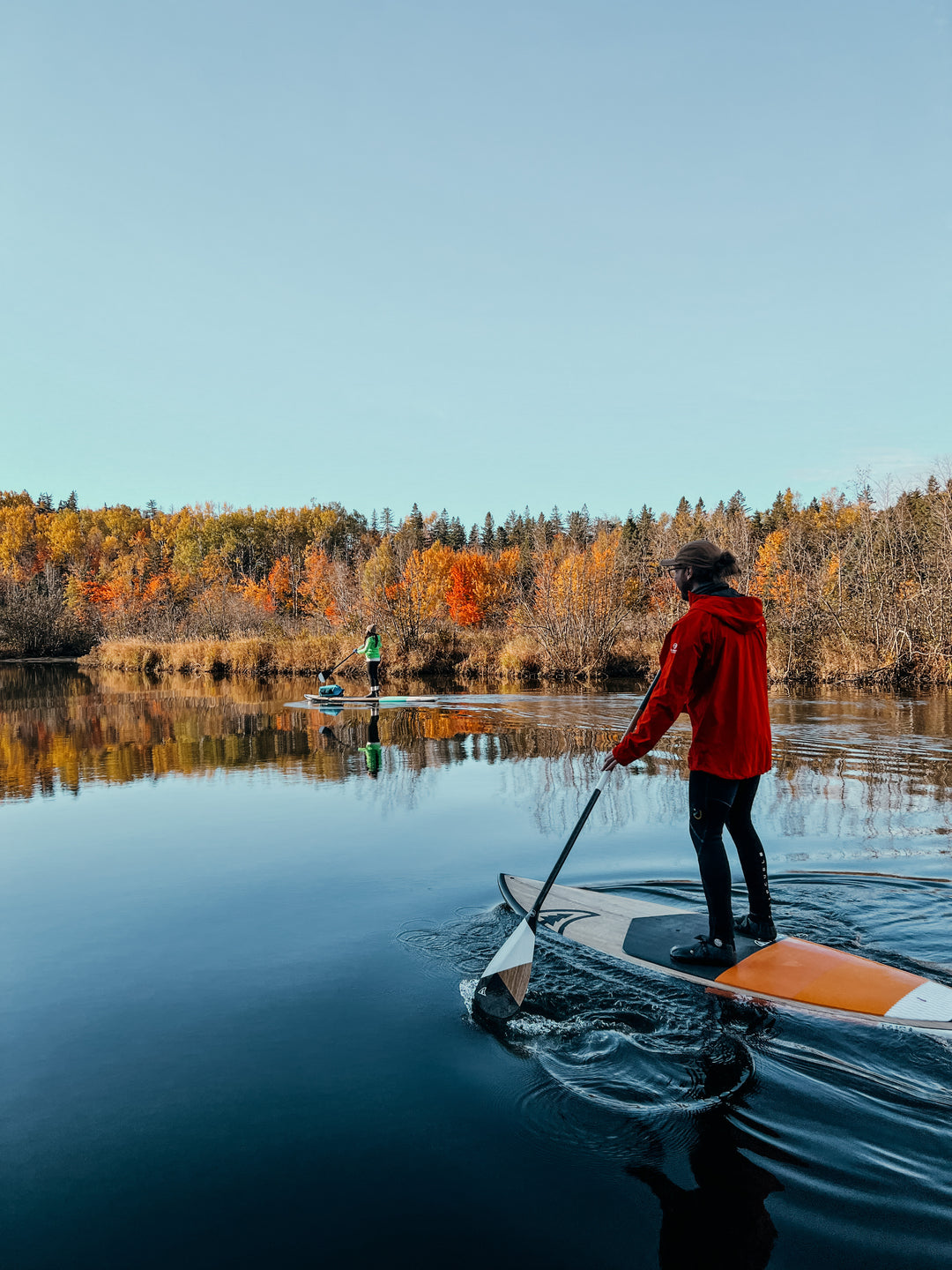
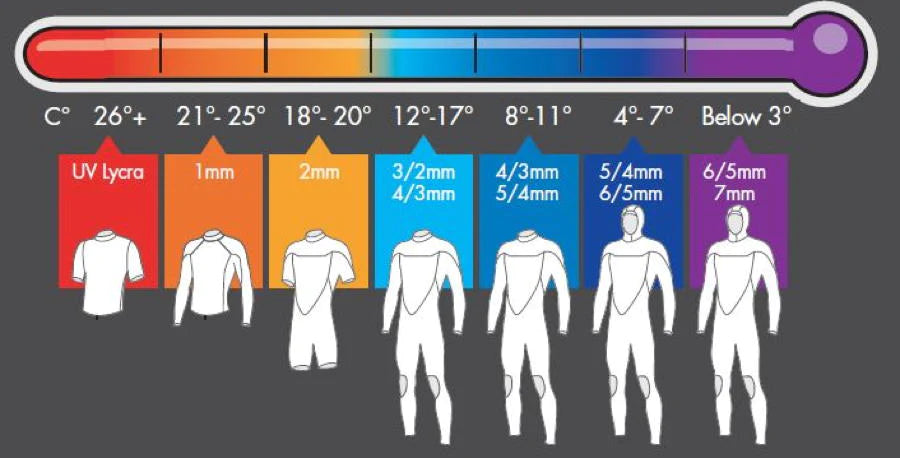
The water temperature greatly influences which wetsuit is necessary. The colder the water, the more a wetsuit with a thick layer of neoprene will be necessary. If the wetsuit indicates a single number (ex. 3mm), then the neoprene layer has a thickness of 3mm on the entire wetsuit. On the contrary, if the wetsuit is a 3/2, this indicates that there is 3mm of thickness on the torso area to ensure warmth and floatation, and 2mm of thickness on the legs and arms areas to facilitate movement.
If you do not have the means to procure yourself with several wetsuits of different thickness levels, choose a 4/3mm wetsuit: versatile and perfect for prolonging your season from spring to fall. People who don’t get chilly as easily should perhaps opt for just a 3/2mm.
Photo: Standup-guide.fr
Now, it’s true that with SUP, you spend more time out of the water than in the water. SUP is a physical activity demanding a certain amount of physical effort and outdoor temperatures can be hot. For this reason, here are two alternatives:
Photo 1: Geneviève Diotte
Photo 2: Dominic Courchesne
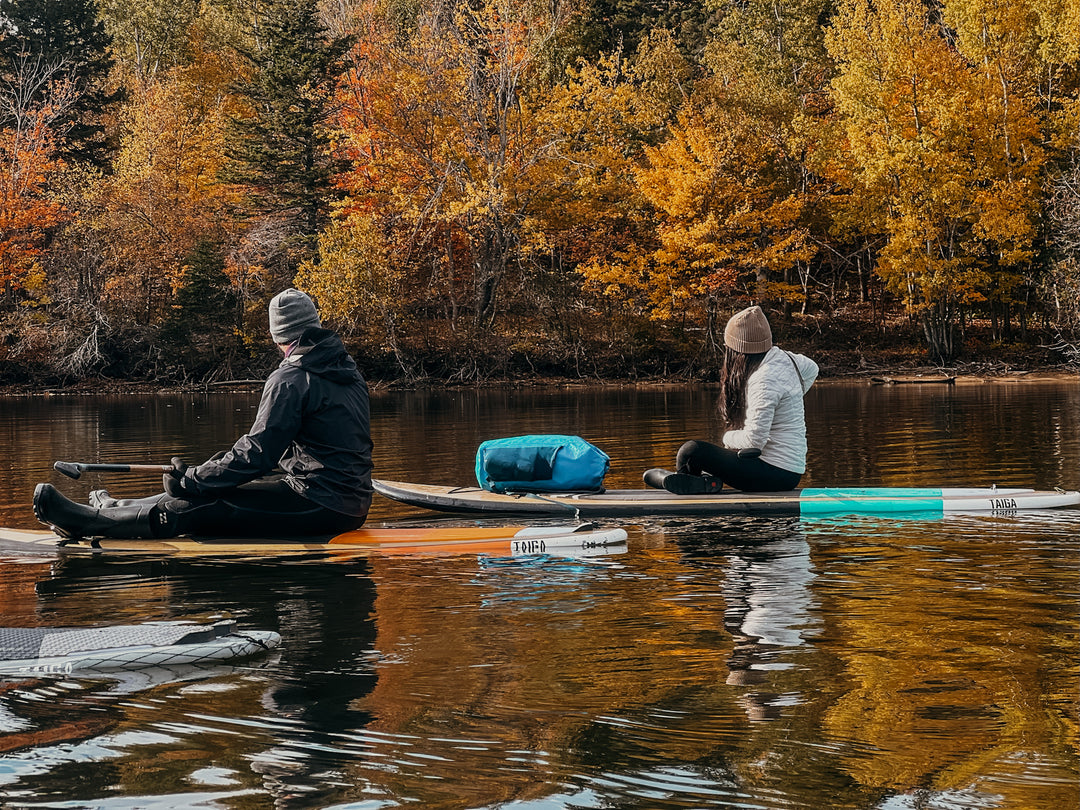
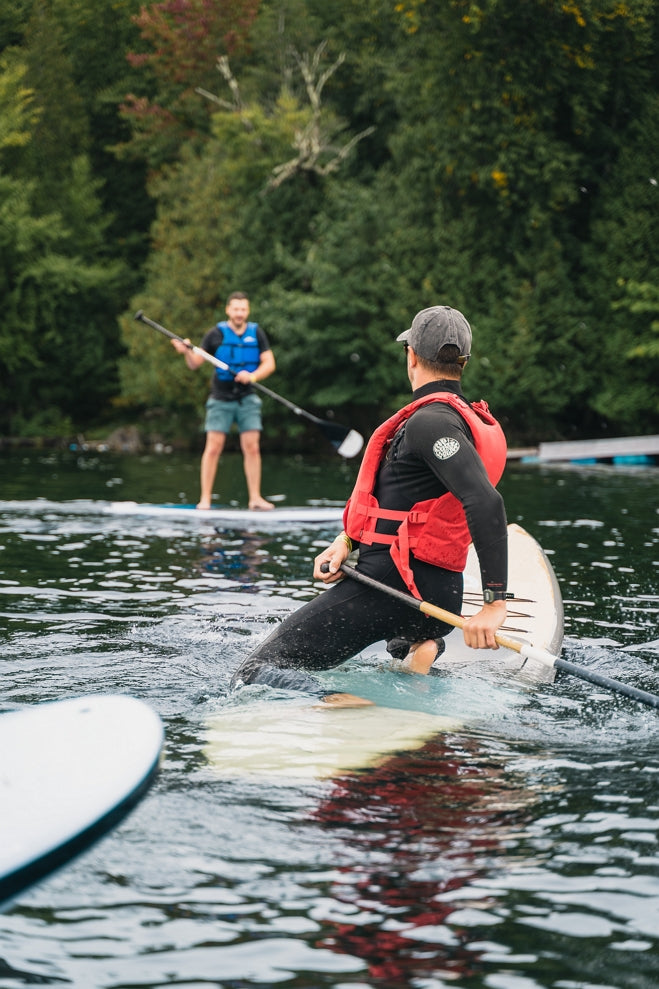
If the wetsuit is important, then several accessories are just as crucial. Because your feet will most definitely be submerged in water, choose booties that will keep your toes warm. Because your hands may numb quickly when exposed to wind or cold water, opt for gloves or neoprene mittens.
In case of extremely cold temperatures, opt for a balaclava. It will make a huge difference in the water, preventing the water from easily entering your wetsuit. Your head is one of the most important parts to protect in cold water. Trust us, you will want a balaclava when the water temperature is below 8°C.
Photo: Geneviève Diotte
